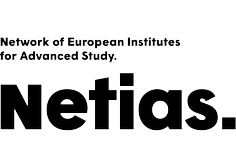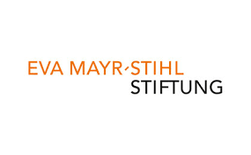THE FRIAS LANGUAGE AND SPACE WORKSHOPS
THE FRIAS LANGUAGE AND SPACE WORKSHOPS
Why these workshops?
Linguistic interest in space is not at all a new phenomenon. The distribution of linguistic features in geographical space has been a concern for linguists at least since the advent of Joh. Schmidt’s wave theory about the spread of linguistic innovations (1872). Space is also, of course, the basis for dialect geography and areal linguistics, and it plays an important and essential role in linguistic thinking about national standard languages, roofed and roofless dialects, nationhood and language, etc. Research on spatial grammars and their typological variability is a more recent phenomenon, but one that has flourished over the past 20 or so years. It has lead to a big leap forward in terms of our knowledge about how language and space are interlocked by the deictic use of certain classes of linguistic forms, but also about how cultures and spatial grammars are related to each other. Having said all that, it is remarkable that these two traditions of research on how language is spatially bounded and at the same time creates space have remained almost entirely disjunct -- as reflected in highly divergent methodologies and a different (albeit oft implicit) theorising about space. The investigation of geographical distributions of linguistic features heavily draws on (typically two-dimensional) mapping techniques and thus comes with a necessarily abstract, bird’s eye perspective on language. Conversely, research on spatial grammars typically adopts a pragmatic approach, owing to the fact that most spatial expressions are indexical such that their meaning is locally determined. This implies a strong orientation on the physical surroundings in which language interaction takes place, but also – and increasingly – a focus on the cognitive representation of these surroundings, and on how these representations are collaboratively created. One of the aims of this workshop series is, therefore, to discuss ways in which these two traditions (the ‘geographical’ and the ‘pragmatic’ tradition for short) can be brought in touch with each other. This will require, first, a re-thinking of the notion of geographical space as adopted (mostly naively) in most strands of areal linguistics and dialectology, and possibly a pragmatic and cognitive re-framing of spatial thinking in the ‘geographical’ tradition. Theories of space as developed in human geography and sociology will be of particular interest here. For instance, it may be asked in which ways ‘objective’ linguistic spaces as described by linguists (e.g. dialect areas or linguistic areas such as sprachbünde) are mirrored (or not) in ethnolinguistic representations of space, how geographically bound variability in language is interpreted in social terms, and how it is related to the construction of personal identities in interaction, etc.
In addition, there are new, emerging fields of spatial research involving language and communication. These also need to be taken into account. The idea of interactional spaces (as pioneered by Erving Goffman’s work on “Behavior in Public Places” and developed in more detail by Adam Kendon’s writings on “Spatial orientations in social encounters”) is not new; but due to advances in recording and analysis techniques, the exact ways in which bodily and linguistic behaviour create interactional spaces has recently spurred off a new round of research on gestural micro-interaction and on deixis. The way in which interactional spaces influence the pragmatics of spatial language is an issue we are only beginning to understand. Another relatively new research site is the link between spatial cognition and robot navigation, which is sometimes investigated against the backdrop of spatial language.
The three workshops will thus engage linguists, linguistic anthropologists, sociologists, geographers and cognitive scientists in a debate about the theoretical foundations of space and language.
Workshop I: Grammar, space and cognition
Dates 5-7.11.
Organisers: Peter Auer/Martin Hilpert
Thematic foci
This workshop is concerned, first, with the relationship between spatial grammar and spatial cognition and, second, with the coordinated or individual use of language, gesture and machines for movement in space.
In the grammars of the world's languages, certain parameters of spatial orientation and movement are sedimented. These patterns prestructure spatial cognition in a socially and culturally given way – they represent a certain spatial “world view”. On the other hand, local deixis is a means to anchor the meaning of linguistic expressions in space, and to help interactants locate themselves, their co-participants and the things they talk about in space. The questions to be addressed in this workshop can therefore be summarized as follows:
Along which dimensions do the spatial systems in the languages of the world (including sign languages) vary?
What is universal in spatial systems, and what is culture-specific?
What is the impact of spatial grammar on spatial cognition?
How do speakers use spatial deixis in order to manoeuver in space, to refer to non-present things, to construe displaced worlds (deixis am phantasma) , etc?
In addition to linguists and grammarians, the meeting will also include cognitive scientists, anthropologists and psychologists.
Workshop II: Language and Interactional Spaces
Dates: 16.-18.11
Organisors: Peter Auer/Anja Stukenbrock
Thematic foci
When humans participate in focussed interaction, they create an interaction space. This is achieved, first of all, through their visual behaviour (body movements, posture, gaze, gesture). This space provides shelter for the interactional episode which develops, although its boundaries are not impermeable (sideplay, etc.; a typology is given by Goffman). Interactants adapt to the physical surroundings but are not constrained by them. Interaction spaces also have an impact on perception: within such spaces, monitoring is intense, while the space beyond the interaction space is not visible or only monitored peripherally. Participants can establish visual domains of scrutiny by identifying spaces inside or outside the interaction space (a typical example for the latter is route direction giving). This is usually accomplished by forms of deixis, i.e. by a specific coupling of gestural and linguistic means.
The meeting will address the following questions:
How are interaction spaces construed in face-to-face interaction?
How are interaction spaces construed in other, electronically mediated forms of interaction, such as on the internet, in machine-supported communication, or in the mass media?
How are perceptional spaces outside or inside the interaction space identified and maintained by the use of deixis?
How do special tasks and special environments (e.g. surgery, flight control) have a bearing on the ways in which interaction spaces are organised?
In addition to linguists, the meeting will include anthropologists and sociologists.
Workshop III: Language, Space and geography
Dates: 26-28.11.
Organisors: Peter Auer/Benedikt Szmrecsanyi)
Thematic foci
Space is, in fact, a three-dimensional notion, which can only be experienced by a human being from her origo.Space is arguably personal, it can be physically experienced, it develops and changes incrementally with movement, and it is in this sense concrete. Space can be reduced, however, to lower-dimensional maps, which tend to be abstract in that they more often than not do not depend on the origo of a speaker for interpretation. Since the beginnings of modern dialect geography at the latest, the latter take on space has been dominant in linguistics. What geolinguists typically do is to map speakers (or rather, languages or language varieties) to geography, with the aim to construe language (or dialect) spaces via cartographic techniques, and to explain linguistic variability as wither a function of geographic distance, or in terms of geographically coherent language/dialect areas. As a consequence, variation in space has become privileged over other types of variation.
Against the backdrop of this tradition, the goal of this workshop is to discuss the following issues:
What is geographic space, and how can it be linked to language (if at all)?
What can be achieved through cartographic visualizations, and what not?
To what extent is geographic distance, as a determinant of linguistic variability, real?
How is 'location' used as a topic in interaction, and how are language spaces construed in interaction (and in the media)?
How are public spaces construed through writing?
How do spaces become associated with political units such as nation states.
In addition to linguists, the meeting will also feature geographers and sociologists.





